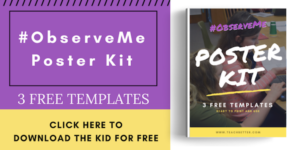Guest post: Dr. Molly Ness
Do you know the difference between a vowel and a consonant?
Chances are, right now you’re rolling your eyes and thinking, “Duh! A vowel is A, E, I, O, U, and sometimes Y. A consonant is everything else. Doesn’t everybody know that?” If that is the answer you’ve provided, you’re sort of correct. And rest assured, you are like the majority of people who do not know the linguistic difference between consonants and vowels. In my work as a teacher educator and consultant providing long-term professional learning to schools, I find that most teachers give me the exact answer above.
In fact, a vowel is a sound that is produced with no obstructions. When you produce a short /a/ sound, the air simply floats through your mouth and has very little interaction with your teeth, your lips, or other structures. On the other hand, a consonant has some degree of air obstruction. Try making the sound /b/. Do you feel how the air is temporarily blocked by both of your lips pursing together? So yes, A, E, I, O, and U are examples of vowels – but the real definition of a vowel pertains to how the sound is produced.
Let’s keep in mind the words of Louisa Moats, who reminds us that, “Teaching reading IS rocket science.” Share on XSo why does this all matter?
It matters because when teachers have an understanding of the linguistic structure of our language, they are better prepared to teach students how to read. For instance, if a second-grade teacher is looking at a child’s attempt to spell BED as BID, she better understands that the student is struggling with short vowels because they are produced so similarly in the mouth. Just because someone is proficient in the language themself does not mean that they are best-prepared to provide explicit instruction on the complications of our language.
The argument that teachers need better preparation in reading instruction is not a new one. In her 1999 writing to the American Federation of Teachers, Louisa Moats wrote, “Specifically, teachers must understand how the English language is structured in spoken and written form,” For too long, this cry for better preparation in linguistics, word study, orthography, and our language structure has been glossed over in teacher preparation, in graduate schools of education, and in professional development.
Fortunately, this argument is receiving new attention, thanks partly to two recent publications.
First, Mark Seidenburg’s Language at the Speed of Sight explores the science of reading. In a recent interview on National Public Radio, the author argued that newly minted teachers must have a basic structure of linguistics. Second, the International Literacy Association’s 2018 report of “What’s Hot in Literacy” reported teacher preparation as an extremely important topic to explore. More specifically, the report states, “We’re not doing as good a job as we can to prepare our teachers to be effective teachers of young children when it comes to literacy.”
So What Now?
We can do better. Once we commit to better teacher preparation, more comprehensive support for teachers already in the field, and meaningful professional learning opportunities around our language structure, our teachers will be more knowledgeable in teaching students to read. Let’s keep in mind the words of Louisa Moats, who reminds us that, “Teaching reading IS rocket science.”
About Dr. Molly Ness
 I am an associate professor in childhood education at Fordham University’s Graduate School of Education. I graduated Phi Beta Kappa from the Johns Hopkins University. After teaching in California with Teach For America, I earned a PhD in Reading Education and a Masters in English Education from the University of Virginia. In 2006, I served as director of the University of Virginia’s McGuffey Reading Clinic. I am a prolific researcher and writer. My current research focuses on reading comprehension, teachers’ instructional decisions and beliefs, and the assessment and diagnosis of struggling readers. I hold over fifteen years of teaching and clinical reading experience. In my current job as a teacher educator and university professor, I teach language, literacy, and research classes to masters and doctoral level students.
I am an associate professor in childhood education at Fordham University’s Graduate School of Education. I graduated Phi Beta Kappa from the Johns Hopkins University. After teaching in California with Teach For America, I earned a PhD in Reading Education and a Masters in English Education from the University of Virginia. In 2006, I served as director of the University of Virginia’s McGuffey Reading Clinic. I am a prolific researcher and writer. My current research focuses on reading comprehension, teachers’ instructional decisions and beliefs, and the assessment and diagnosis of struggling readers. I hold over fifteen years of teaching and clinical reading experience. In my current job as a teacher educator and university professor, I teach language, literacy, and research classes to masters and doctoral level students.


